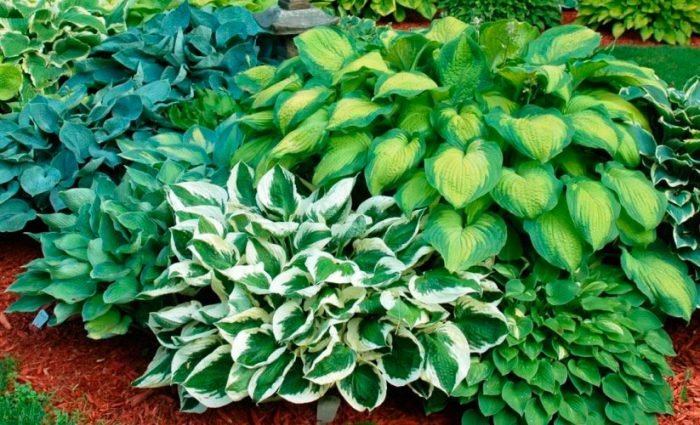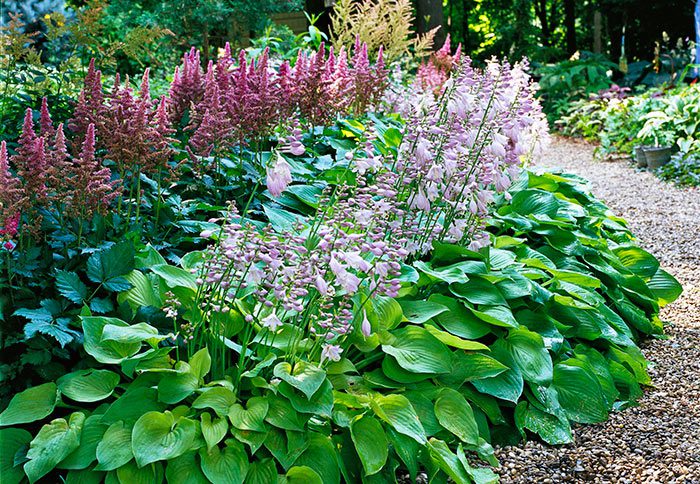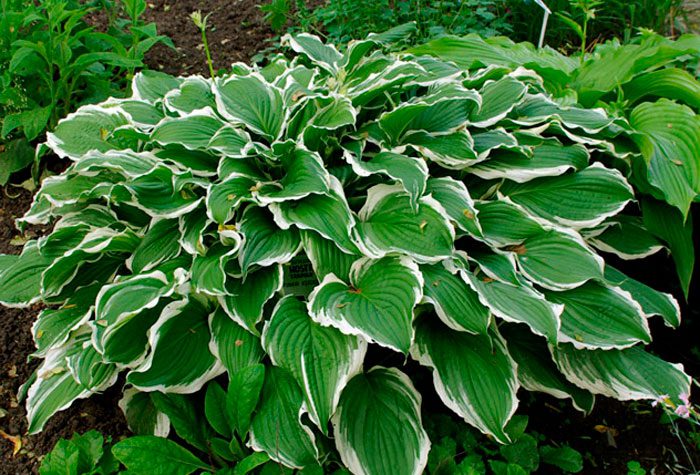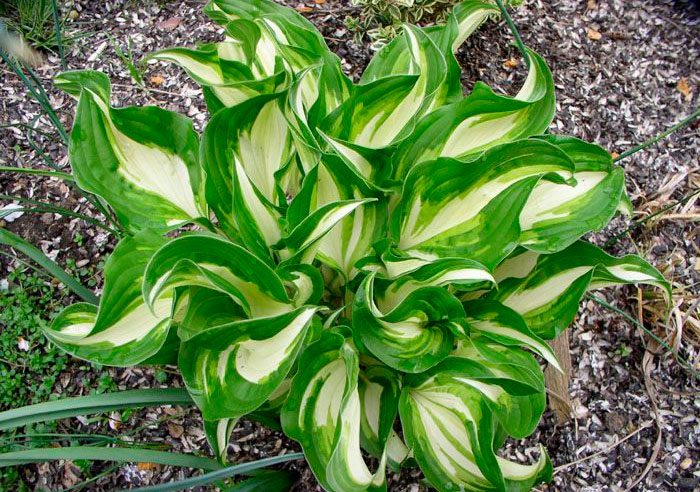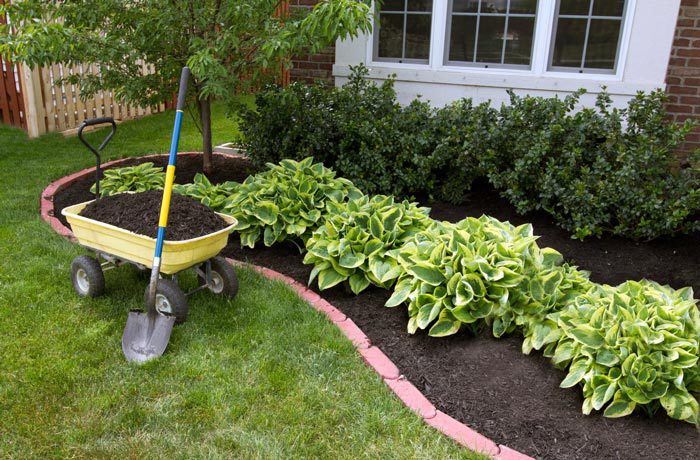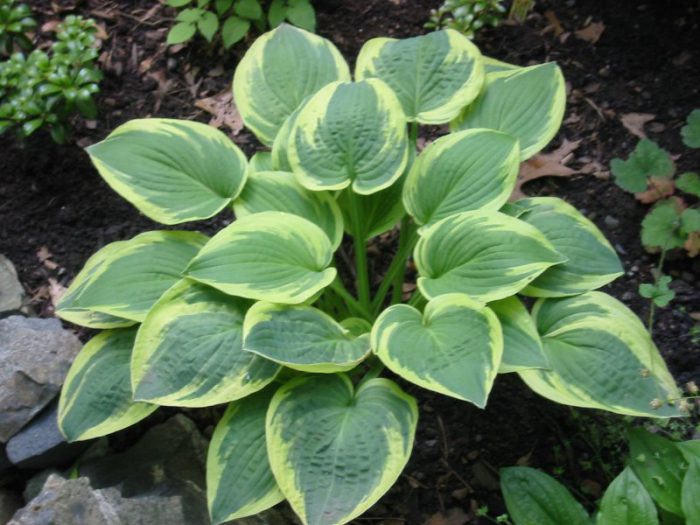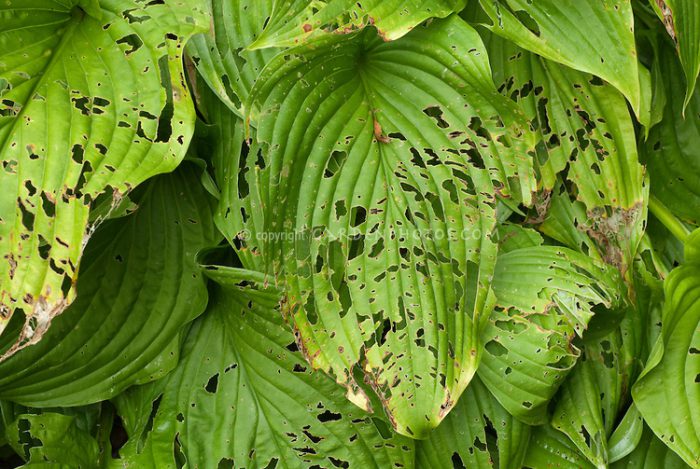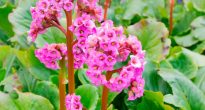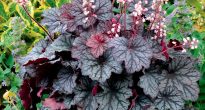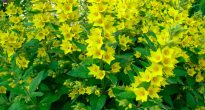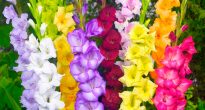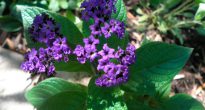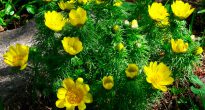A perennial herb such as the hosta (Hosta), or the function is directly related to the asparagus family, but not so long ago it was a representative of the lily family. This plant got its name in honor of N. Host, who was an Austrian doctor and botanist. And the function was named after the German botanist G. H. Funk. This genus includes about 40 different plant species. Under natural conditions, hosts can be found in the southwest of the Far East, on the Kuril Islands, in East Asia (China, Korea, Japan) and on Sakhalin. These plants simply adore moisture, and therefore they prefer to grow on the banks of rivers and along streams, on the edges of forests, on mountain slopes, etc. In Japan, such a plant is considered sacred, while the Japanese are happy to eat leaf petioles as a delicacy ... When the hosta was introduced to England, there was no particular interest in this flower, but everything changed after it got to the New World. This plant became very popular and soon it was already cultivated on all continents.
Content
Host features
Hosts are distinguished by their diversity, and therefore every gardener can choose exactly the type that can decorate his garden. Such a rhizome plant with a spectacular appearance is capable of growing into an entire plantation in a short period of time. Hosts love for their spectacular foliage, which is quite different in different species and varieties. Such a flower is considered universal and completely non-capricious. It easily withstands drought and cold, is shade-tolerant, and can be an excellent backdrop for other flowers. Over the years, the host becomes more and more beautiful, while in the 5th year of her life, her beauty reaches its peak.
Absolutely all species and varieties are herbaceous and stemless plants, and their small, shortly branched, thickened rhizome has a large number of cord-shaped roots, with the help of which the flower is securely fixed in the ground. The flower stalks, practically without leaves, are tall and rise above a rosette consisting of lovely leaf plates. They bear racemose inflorescences, consisting of double or simple flowers, which can be painted in white, purple, pale blue or pink.This plant differs from other shade-loving plants in that it has very beautiful flowers. So, they are part of a one-sided racemose inflorescence and have a bell-funnel-shaped or simply funnel-shaped shape. The fruit is a triangular capsule that is leathery. It contains a large number of seeds that retain good germination for 12 months.
The basal long-petiolate leaves are heart-shaped or lanceolate with a sharpness in the upper part. Veins are clearly visible on the surface, while the color variety of these colors is simply amazing. The color of the leaf plates is directly related to the type and variety of the plant. So, you can see different shades of blue and green, which can turn into white and yellow. Moreover, as a rule, the leaves are not monochromatic, they have various spots, strokes, stripes, and the combination of color shades can be quite unexpected. Also, sheet plates are distinguished by a wide variety of textures. They can be wrinkled, shiny, wrinkled, waxy, dull, have a metallic sheen ... The average height of the bush is from 50 to 80 centimeters, but you can meet giants whose height reaches 1.2 meters, and there are also dwarf varieties (height about 15 centimeters).
Types and varieties of hosts with photos
Plants such as hosts are very popular in landscape design. At the moment, there are more than 4 thousand varieties of hybrid hosts. However, the main species, which served as a kind of material for creating all this diverse splendor, are relatively few. The main types that were used by breeders:
Khosta curly
The bush reaches a height of 60 centimeters, its wide dark green leaf plates have a white border, for example: Dream Weaver;
Hosta high
The bush reaches a height of 0.9 meters, large shiny leaves are painted in dark green, for example: Tom Schmid;
Hosta Fortune
A bush up to 50 centimeters high, green leaves are bordered by a cream strip, for example: albopicta;
Hosta Siebold
The bush is about 60 centimeters high, veins are clearly visible on the leaf plates, for example: Elegans;
Hosta wavy
The height is about 75 centimeters, the edge of the leaf plates is wavy, the central part is white with a green border with strokes, for example: Undulata Mediovariegata;
The host is bloated
Height about 50 centimeters, the leaves have a pointed tip, for example: Thomas Hogg;
Khosta plantain
The height is about 50 centimeters, the shiny leaves are painted in a deep green color, for example: Royal Standard.
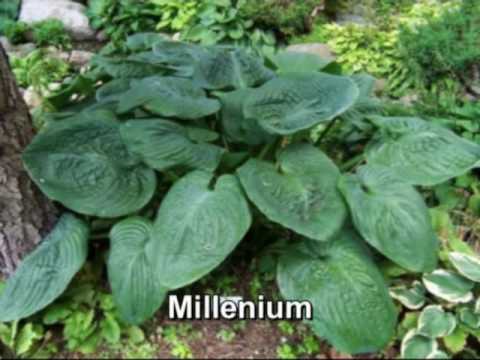

Watch this video on YouTube
Varieties are classified by size and color
Such plants are divided into 5 groups according to the color of the leaves:
- hosta blue (hosta blue-V) - the color of the leaf plates is gray-blue;
- hosta yellow (Go) - it includes all these plants with yellow leaves;
- hosta green (Gr) - green leaves;
- host variegat (V) - varieties with variegated foliage, as well as varieties with a light edge along the edge of the leaf plate;
- host media choice (MV) - light colored leaf plates have a green border around the edge.
There are 6 groups separating hosts by size:
- Dwarf - bushes no higher than 10 centimeters, Draft (D): Blue Mouse Ears (light blue leaf plates are very similar to mouse ears).
- Miniature - height varies from 10 to 15 centimeters, Miniature (Mini): La Donna (leaves are painted simultaneously in yellow, blue and green).
- Small - height 16-25 centimeters, Small (S): hosta Goldtone (green leaf plates have a strip of yellow or white), Headsmen Blue (greenish-blue leaves).
- Average - height 30-50 centimeters, Medium (M, Med): Night Before Christmas (the leaves are dark green, and their central part is white), So Sweet (green leaf plates have a whitish-cream border), White Feather (this a unique plant has a white leaf, but it acquires a green color over time).
- Large ― Height 55–70 centimeters, Large (L): Alvatine Taylor (green-blue leaves have a yellow-green border), Golden Meadows (wrinkled, rounded leaf plates have a middle golden color, a rather wide greenish border and light green strokes) ...
- Giant - height more than 70 centimeters, Giant (G): Blue Vision (greenish-blue leaves), Sum of All (the central part of the leaf plate is green and there is a golden border of a fairly wide width).
Growing hosts from seeds
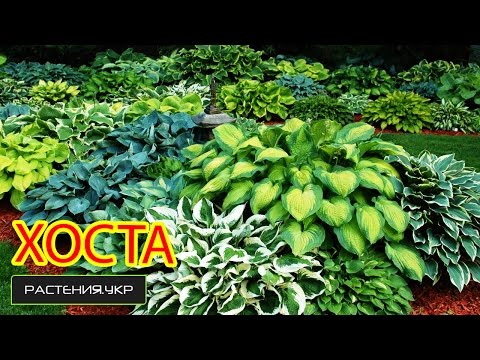

Watch this video on YouTube
Growing in a pot
Such a plant can be propagated by seeds, dividing the bush, and also by cuttings. If you want to grow such a flower from seeds, then you should remember that how successful it will be depends directly on whether you treat the seed with growth-stimulating agents (you need to immerse them in root, zircon, epin or juice for 30 minutes aloe), or not. The fact is that seed germination is not very high - about 70-80 percent. There are gardeners who recommend using the stratification method, namely, placing the seeds in a cold place for 4 weeks. It is also important to choose a high-quality soil mixture for sowing. It should be free of pathogens, fungi, etc. For this, it is recommended to purchase the substrate in a reliable specialized store. The composition of the soil mixture should include peat, perlite, and vermiculite.
Sowing is carried out from April to May. First, you need to treat the pot with a solution of potassium manganese or medical alcohol. A drainage layer must be laid on the bottom, then add soil and moisten it well. After that, the seeds are sown, they are simply distributed over the soil surface. Then they need to be sprinkled with a thin (5-7 millimeters) layer of soil mixture, which should be lightly tamped. From above, the container must be covered with a transparent film or glass. The optimum temperature for germination is 18 to 25 degrees. If you organize suitable conditions for seed germination, then the first seedlings can be seen 14–20 days after sowing. Seedlings should be protected from direct sunlight, they should be watered moderately, and accumulated condensation should be removed from the shelter in a timely manner. The seeds, until they have sprung up, do not need good lighting, in this regard, until the seedlings appear, the container should be placed in a small partial shade. However, after this happens, the seedlings are rearranged in a place with good lighting.
It is necessary to pick the seedlings into individual pots after they have 2 real leaves. To do this, the pots need to be filled with an earth mixture and filled with sand by ¼ part, and the hosts are transplanted into them. Watering is used exclusively bottom. To do this, water is poured into the container and pots are installed in it. They are removed only after the top layer of the substrate becomes wet. After transplanting, the hosts should be hardened. Remove shelter for a few hours. After 7 days, the shelter must be removed for good, and from that moment the flowers must be taken outside, but only if the air temperature is at least 18 degrees. It should be remembered that hosta seedlings grow for a very long time, and even such plants that grow from seeds may not retain varietal characteristics.
Landing in open ground
What time to plant
First of all, you need to find a site that is best suited for growing these flowers. It should be remembered that such a plant is grown for a long time (about 20 years) in the same place without transplanting, while from year to year it becomes more and more beautiful. It is recommended for the host to choose a slightly shaded area that will be completely free of drafts. However, it should be remembered that the richer the color of the foliage, the more light such a plant needs, the same applies to the presence of yellow as well as white areas on the surface of the leaf plate. For variegated varieties, it is recommended to choose a place that will be in the shade at midday, and the rest of the time it will be illuminated by the sun. For varieties with blue leaves, you should choose a shaded place, while they need very little sunlight (about 2 hours a day will be enough).It has been noticed that in a strong shade the hosts do not grow so quickly, but their leaf plates are large, and the bush is slightly higher.
Suitable soil should be moist, rich in humus, well-drained, slightly acidic or neutral. Such plants do not like sandy soil, as well as heavy loam. If you are going to transplant seedlings into open ground in the spring, then you should start preparing the site in the fall. For this, the surface of the site must be covered with a ten-centimeter layer of organic fertilizers. After that, the soil must be dug to the depth of the bayonet shovel. In the spring, hosts can be safely planted on the site. Planting such plants in open soil can only be done if frosts are no longer expected. In mid-latitudes, this time, as a rule, falls on the last April and early May days.
How to drop off the host
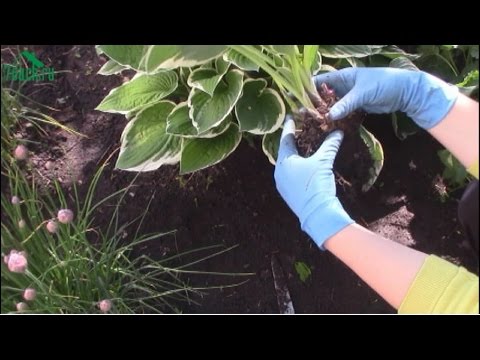

Watch this video on YouTube
Between the holes, you need to leave from 30 to 60 centimeters of free space, while the size of the gaps is affected by the variety of the plant. If hosts of giant varieties, then between them should be left at least 0.8-1 meters. Hosts in pots should be watered abundantly a few hours before disembarkation. In the event that you transplant hosts and at the same time divide the bush, then it is necessary to remove the roots from the parcels that have dried up, have damage or rot. A seedling with a lump of earth is poured into the hole, or the cut is lowered 2-3 centimeters below the surface of the soil. Then you need to carefully straighten the roots and fill the hole with soil, which should be tamped (not very hard). The host is watered abundantly. After that, the soil surface near the root should be sprinkled with mulch (a layer of small bark).
Hosta care features
In the event that the hosta is planted in a nutritious soil, then it does not need additional fertilizing for 3-4 years. In autumn, the soil surface is sprinkled with compost and humus, mulching and at the same time feeding the plant. The plant does not need a lot of mineral fertilizers, but if necessary, spread the granular fertilizer over the surface of the soil near the bush. This must be done on wet ground (after rain or watering). Top dressing using liquid fertilizers (root and leaf) should be carried out 2 times a month until mid-summer, if this is done longer, then an actively growing flower will not be able to properly prepare for wintering. The ground around the plants should always be moist, especially for young hosts. In this regard, watering should be timely and should be done early in the morning. In this case, the water should be poured carefully under the bush, since the liquid that got on the leaves greatly spoils them. Pour water carefully so that the liquid can be well absorbed. The fact is that a strong jet of water compacts the soil. If the flower lacks water, then this can be understood by the darkened tips of the leaf plates.
In the event that you want to keep the attractive appearance of the bush for a long time, then you need to remove the young flower stalks by breaking them out. The fact is that the faded bush begins to fall apart. Loosening and weeding should be carried out only at the very beginning of cultivation, the fact is that over time the bush will grow and itself drowns out the weeds. After 3-4 years, the flower will grow strongly and will need to be divided. To do this, the bush must be dug out and young cuttings must be separated from the main rhizome. If the hosta is healthy, then this procedure will not harm her.
Diseases and pests
Such plants are distinguished by their resistance to diseases, however, American experts assure that if there are a large number of specimens in the collection, then it is likely that there is a patient among them. It happens that bushes weakened or affected by frost fall ill with phylosticosis.This fungal disease can be recognized by the spots of a brownish-yellow color formed on the leaf plates, which eventually merge together. The fungus Phyllosticta aspidistrae Oud, which infects flower stalks, is also a threat to plants. Affected specimens should be dug up and destroyed, and after that it is imperative to disinfect the soil.
This flower is also threatened by gray rot (Botrys cinerea) and sclerotinia (Sclerotinia). As a rule, leaf plates rot. To combat rot, it is recommended to use fungicidal products, the basis of which is folpet. A fungus such as sclerotinia is a whitish, cotton-like mold that damages the root collar of a plant. They are fighting with dichlorane.
The greatest danger to the host is slugs. You can find out about their appearance by large holes in the sheet plates. Getting rid of them is pretty easy. To do this, place bowls filled with beer next to the plants. After a day, you just have to collect the slugs that have crawled down to the smell of this drink.
Stem nematodes can also settle. You can learn about nematode infestation by the yellow necrotic specks spreading between leaf veins. In order to be completely sure that nematodes have settled on the plant, you need to take one leaf plate, break it into small pieces and pour everything into a thin-walled transparent glass. You need to pour clean water into it. After 30 minutes, you should carefully examine the contents of the glass. If there are nematodes, then you should see tiny worms in the water. It is impossible to get rid of this pest, because no means can destroy its eggs. We'll have to dig up and destroy absolutely all the plants that are next to the affected specimen within a radius of 200 centimeters.
If caterpillars settle on the host, then in just one night they destroy the entire bush. Beetles and grasshoppers make many holes in the leaves. Insecticidal products can help cope with pests.
After flowering
When the flowers wither, the peduncles need to be plucked. At the beginning of autumn, the host should begin to prepare for the winter period, at the same time, you can plant them if necessary. 30 minutes before the start of planting, the bush must be watered abundantly. Then it must be dug out and divided, while at least 1 leaf outlet must be present on each division. The distance between the plots is 25–35 centimeters, while they are planted at the same depth at which they grew. The planting hole must be made wide, since the root system grows in a horizontal direction. Water the transplanted host very generously at first. Transplantation and division are carried out no later than mid-September, so that the plant has time to get stronger before frost. As a rule, young hosts take root a month after planting. With the onset of spring, the cuttings will begin to grow actively, and in just 2-3 years they will be mature and very spectacular plants.
For the winter, the hosts need to be insulated. To do this, in the autumn, the soil surface must be sprinkled with a layer of mulch (leafy soil). Such mulch is most needed by those flowers that are grown under trees, since they will receive the nutrients they lack from the leafy soil. And with the help of mulching, the level of the flower garden is raised, and the drainage of the soil becomes much better.

